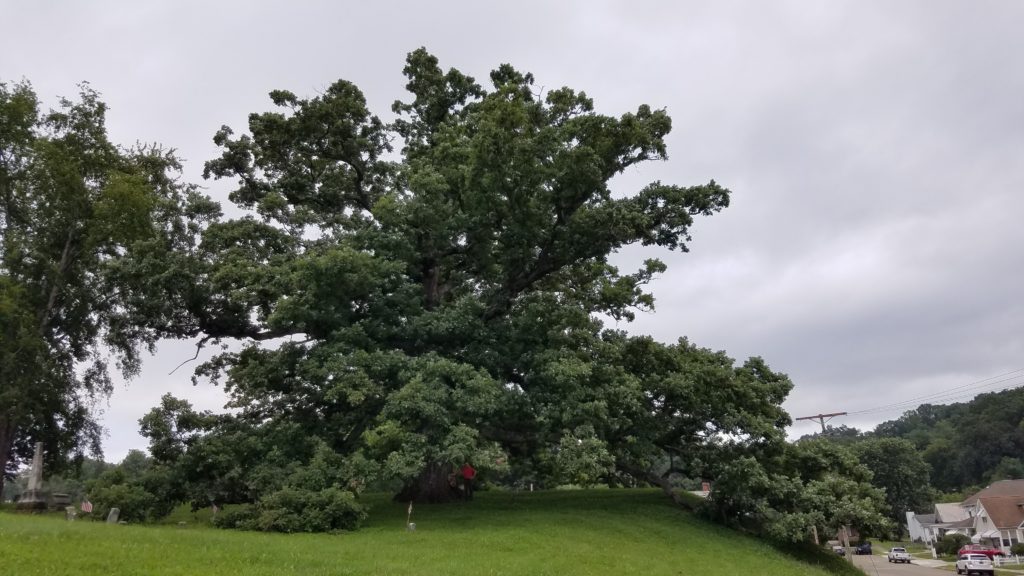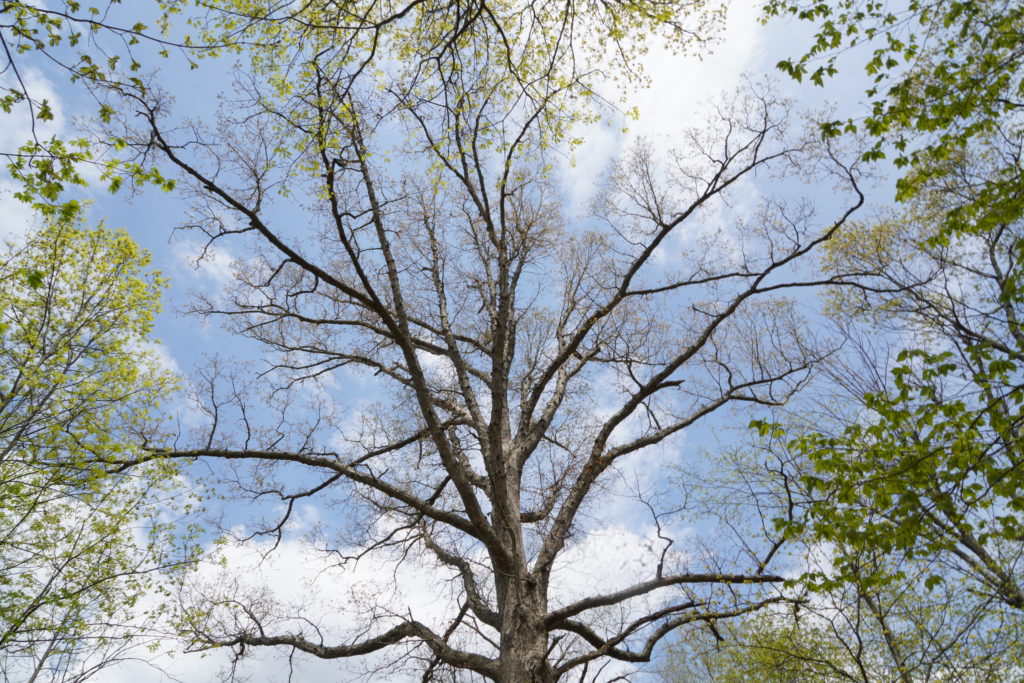Blog
Tagged In: deforestation, endangered species, Fracking, logging, national park service, Wayne National Forest, white oak
Will Wayne National Forest Save the White Oak?
Nathan Johnson, Director of Public Lands, June 4, 2018
By many accounts, the white oak (Quercus alba) is the most important wildlife tree in Ohio, and one of the most beautiful and “charismatic” trees of the eastern forests.The white oak is also one of the longest living organisms in the eastern United States, commonly living for 300 to 600 years. It is a true keystone of many forest ecosystems.
Acorns—the fruit of the oak—are manna from heaven. Consisting primarily of carbohydrates, with some fats and important nutrients and minerals, acorns are the rough nutritional equivalent of a very healthy bread. Each fall, they are the main food source for numerous animal species of the eastern forests, including wild turkey, white tailed deer, ruffed grouse, and the American black bear.

A whole world exists in our native oaks. They host caterpillars of more moth and butterfly species than any other trees at 534 known species. Of course, this is great for the moths and butterflies, but it’s also vital for many of Ohio’s migrant songbirds, which depend mightily on these little wrigglers for their survival. For example, the imperiled cerulean warbler is largely dependent on older, larger white oaks for nesting and reproductive success. This beautiful bird has declined more dramatically in recent years than any of our other migrant songbirds. The recovery and future success of white oak is one of the major keys to the ceruleans’ future.
The white oak also provides important habitat for the federally endangered Indiana bat and the federally threatened Northern long-eared bat, both of which enjoy roosting in the very distinctive and large, platey bark that older white oaks develop on their upper trunks and branches.
Native Americans knew the fruit of the white oak as the “sweet” acorn, because of its low tannin levels compared to the “bitter” acorns of most other native oaks. In fact, Native Americans relied heavily on the carbohydrate and nutrient rich acorns of this tree as a dietary staple.
Our earliest historical records reveal that white oak made up a dominant 40% of the canopy trees in southeast Ohio prior to European settlement. Perhaps our predecessors were helping this oak just as it was helping them.
Things have changed. Sadly, white oak is in serious decline because of unsustainable logging practices. The wood of white oak is second only to black walnut in price fetched on the timber market, which is probably a big reason why these special trees are being logged much faster than they can grow back.
Today, white oaks represent closer to 11% of the canopy trees in southeast Ohio. The white oak’s decline is second only to the white ash, which has been devastated by the emerald ash borer.
White oak will continue its troubling decline unless our public agencies do something to stem its losses. As the single largest forest in Ohio, the 245,000-acre Wayne National Forest represents the best hope for the future of this species. The Wayne should extend special protections to white oak and do everything it can to encourage this species to expand rather than shrink its spatial footprint in the forest.

The Wayne is a public forest — owned by you, me, and every American citizen. The onus is on us to advocate for the white oak, and the Wayne’s recently announced forest plan revision gives us the best opportunity we’re likely to have for a generation.
As white oak is unsustainably harvested on our private forests, the Wayne can stand as a public fortress for white oak recovery. Ohio’s only national forest can be the backbone of white oak restoration, and, perhaps someday, the source of a return to dominance for this peerless forest keystone.
